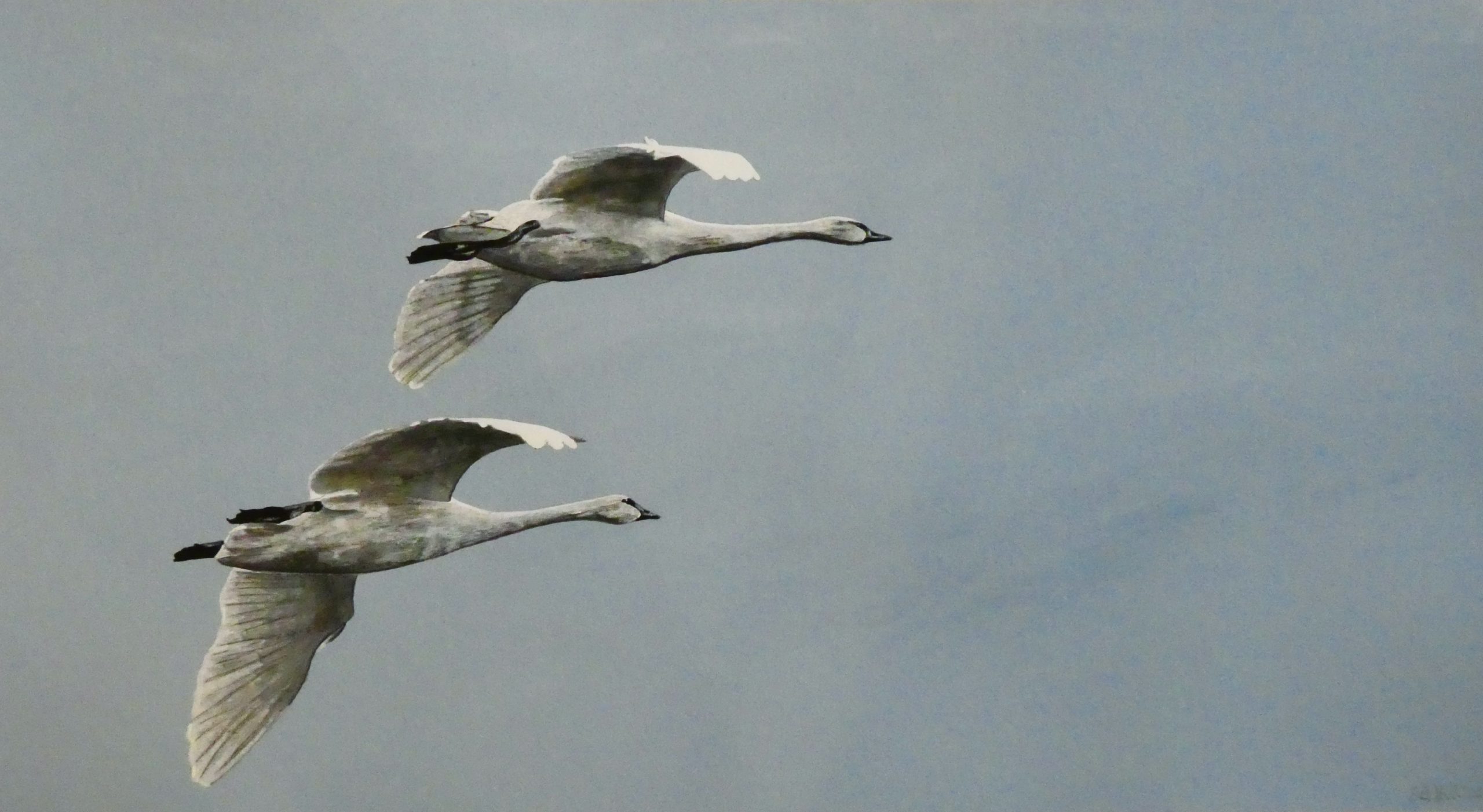HARBINGERS
Friends of mine, Earl and Maureen, live in the Agassiz area of coastal British Columbia. They live at the base of a mountainside with lush, deep forest cloaking its slopes. They’re blessed with creeks meandering beside their property, and their very own beautiful, natural pond right there in their front window view, with iconic Mount Cheam as a backdrop. They live in nature, with nature.
One of many natural, annual visitors to their pond are Trumpeter Swans. Particularly in the fall and winter, this large white member of the goose family becomes a part of Earl and Maureen’s lives. They are anticipated companions, a part of nature’s rhythm, a part of the rustic beauty all around them. These stately birds can stand up to five feet tall, they are a presence that can’t be missed.
Earl and Maureen have developed an ability to listen to the subtle language of the natural world all around them. One of the unspoken signals that has become evident over the years is that of the warnings provided by the Trumpeters. When the Trumpeters arrive in large numbers to congregate at their pond, Earl and Maureen know that a significant change in weather is imminent. Year after year, the warnings have been sounded. The Trumpeters show up in large numbers, and the weather takes a turn to heavy snow, rain or wind. The Trumpeters are the harbingers, and those wise to the language of nature pay heed. So too, as the flock of Trumpeters eventually takes to the wing and vacates the pond, the subtle message is again conveyed. At their departure, the Trumpeters are confirming, the worst has passed. It seems to happen without fail. The Trumpeters are indeed reliable, natural harbingers of changing weather at least to Earl and Maureen, in their comfortable mountainside home.
And so, as 2021 disappears into the mists, and 2022 is upon us, my painting of the two Trumpeters is titled “HARBINGERS”. I leave it to you to decide. Are these two Trumpeters arriving with dire warnings of things to come, or are they departing? And in their leaving, are they saying “the worst has passed”? I suppose, in considering that, you get to decide. I personally hope this is a positive image, one that forecasts better things to come.
(This image was painted with the inspiration of a photograph by Agassiz photographer Ian McAlpine. Thank you, Ian, for allowing me you use your fantastic photograph.)

